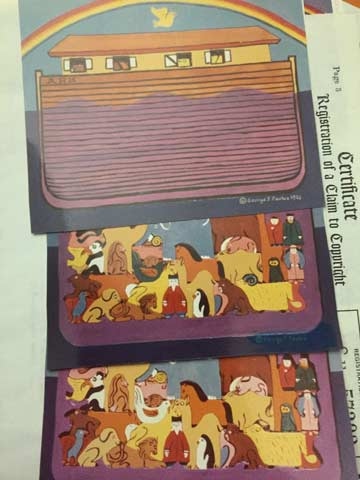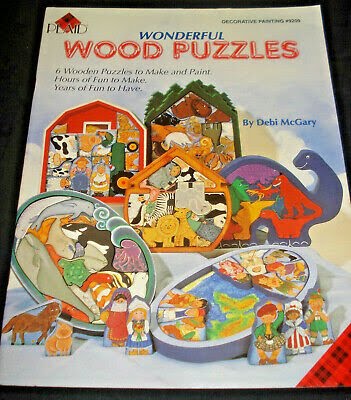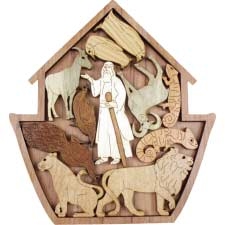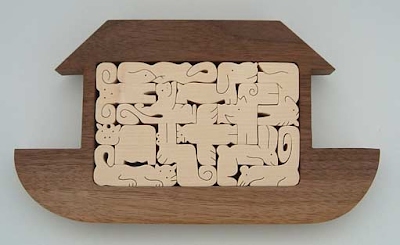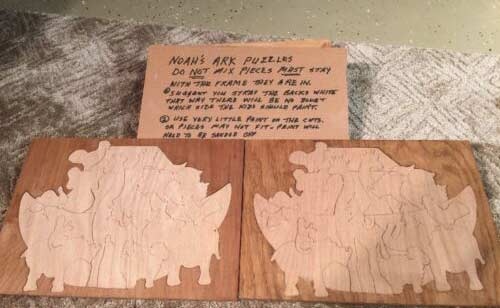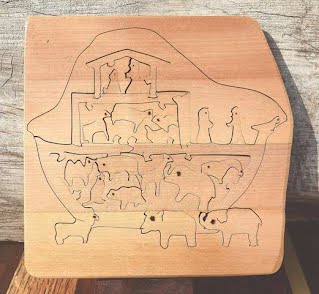Noah's Ark (along with Nativity Scenes and Countries & Continents), can be described as one of the more popular cluster puzzle themes, with 14 distinct instances. However, despite what seems an obvious premise, with the biblical story well known, defining a Noah’s Ark cluster puzzle is not easy! Religious texts give different versions of the size and shape of the ark, the exact number of animals, and Noah and his family! And then there are different interpretations by the modern-day cluster puzzle artists. There are also some instances described as Noah's Ark, of just a handful of animals within an ark outline! These are best largely regarded as general animal puzzles, rather than a true Noah's Ark. Be all as it may, core value inclusions are many animals (with many loosely defined), the Ark, and Noah. Other possibles include the dove, the two by two feature, and Noah's wife. However, these ideals are not always realised, even by the (few) leading lights. And even when the association is more obvious, as with Götz-Peter Reichelt’s magnificent large scale (1 x 1.5m) 142-piece animal and Ark, Noah is (oddly) not included! Arguably, this puzzle should thus strictly be omitted, but on this occasion it would be undeservedly so, given its obvious affiliation. So where to draw the exclusion line? There are so many qualifications. Therefore the listing here is perhaps a little more subjective than I would have otherwise liked. Indeed, there are relatively few instances I fully find favour with. However, where a puzzle is typically portrayed or stated as a Noah’s Ark puzzle, I thus generally include. Prominent artists who show such instances of worth include Götz-Peter Reichelt and Philip Gell although their respective styles are different. Quite best how to present the compilation is a moot point, no one presentation seems best for a variety of reasons. First, the puzzles, within the premise, differ widely. Some puzzles have the designer’s name attached, whilst others do not, so an alphabetical ordering is impossible. Generally, the date is not given, and so a chronological presentation is an impossibility. Therefore, the presentation may be subject to change later much more so than other pages. As a rough guide, I arranged in two broad parts, first of bona fide puzzles, numbering 16, beginning with the two quality instances by Reichelt and Gell, followed by others of like true principles, but of a decidedly lesser quality in comparison. Second, those of a decidedly weaker association with various concerns of what I described as ‘seen and noted’, numbering seven, for the sake of the reader who may otherwise think to draw these to my attention. At times, there is a blurring between the two. For instance, the Arthur Nugent, ‘Noah’s Ark’ puzzle could arguably be better placed in this lesser category (and may well be in the fullness of time). For any one part, the order is largely arbitrary, save for the Reichelt and Gell instances which I have chosen to lead the way for obvious reasons. The 16 Designers Inventory Artists/designers 1. Götz-Peter Reichelt (23) 2. Philip Gell 3. Noah’s Ark Animal Jigsaw Puzzle (Worthpoint) 4. Rene Soriano 5. Roman Inc. 6. Noah's Ark Kindergarten Puzzle 7. Art Nugent 8. Made in China Anon 1 9. Anon 2 10. VBI Inc. 11. Kurt Adler 12. Carolea Hower 13. Mieselwood 14. Mallorca, Arc De Noe 15. ‘Neutrino’, of Creema 16. Mike’s Africa Puzzle 17. George J. Paulus 18. Debi McGary ‘Seen and Noted’ 19. Dave Janelle, of ‘Creative Crafthouse’ 20. Will Witham 21. Cadaco 22. George Luck 23. Handmade 24. Bible Study Study Tool 25. Paula Bailey 1. Götz-Peter Reichelt Götz-Peter Reichelt (1943–) of Hamburg, Germany, and also based in Bali, can be described as the world leader in Noah's Ark cluster puzzles in the sheer number, scale, and quality. He stands head and shoulders above everybody else. These vary in the number of animals and size. 23 distinct puzzles are identified, albeit some are minor variations of each other. In short, there are too many to discuss all in detail here, and so I will instead focus on two large and small puzzles, although this is in relative terms. His ‘small’ is larger than most people’s ‘largest’! The ‘small’, titled Arche Noah, of 1995, includes 68 pieces and the large, titled Große Arche Noah (Great Noah's Ark), of 1999, is of a mind-boggling 142 pieces! ‘Small’ or truly large, these can only be described as magnificent! Indeed, the large is featured in the Guinness Book of Records of 2000 as the largest Noah’s Ark puzzle (see certificate and book page below). I believe that this is a first (and only!) appearance for a cluster puzzle in the Guinness book. Beat that if you can! It also features in his book/catalogue Tier welten, and German newspapers and a DIY magazine. The premise here, unlike puzzles by most others, is of a 3D nature and has two or four layers. Oddly, Noah is not shown, although this is explained by Reichelt: However, I wanted to leave Noah at the door, should the animals first see how they can get along without us humans. Even so, I would much have preferred the inclusion of Noah. 'Small' Ark, 1995 Fig. 1. Arche Noah GPR website: The first big Noah´s Ark I ever carved. In this artistic arrangement there are some 68 animals of all kinds. Elephants, tigers, giraffes, lions, zebra, ostrich, python, oryx and so many others. You don't have to go to a zoo anymore, now you´ll have it at home. Size 99x54x9 cm.
Largest Noah's Ark, 1999 (Große Arche Noah). 142 Figures, in 4 layers. This, the largest of his many Noah’s Arks, can arguably be considered as his masterpiece, and of which is a magnificent sight! This consists of 142 pieces of 71 distinct animals, two of each type, and a majestic 1.5 metre in length, of which, carved with the assistance of his friend Ida Bagus Jiwartem in Bali, to whom he gave the task of the second group of animals of the underlying layer, and took six months to produce! The ark was also featured at the Zoologisches Museum Hamburg in 2018, at Das Centrum für Naturkunde (CeNak). The ark remains in his possession. I like this puzzle very much, in a variety of ways, qualified by the (to me) the inexplicable omission of Noah. The sheer number of motifs is impressive, likewise with the scale, and without any dilution in quality. Also, there is a two by two feature, not generally seen by others. Also, the tessellation principle is largely retained. Only occasionally are there gaps, and what there are is largely inconsequential. I very much like the picture above in an artistic sense! The setting is fantastic; it has everything, the ark, animals, Reichelt himself, and two elephants from the zoo looking on approvingly! The puzzle is extensively discussed in Tier welten, pp. 17–18, shown below: With a new large Noah's Ark I also wanted to give food for thought. The heavily revised children's zoo should become my starting point. But with the final draft it dragged on until I remembered the "back to back" of the crocodile and giraffe. The assignment of the remaining 86 animals was then rather routine. However, I wanted to leave Noah at the door, should the animals first see how they can get along without us humans. As a precaution, I had some planks of my third tree cut to five and eight centimeters. The design of the ark resulted in a boat length of about one meter. With the animal pairs (male and female) on top of each other, a construction height of about ten centimeters. I was horrified to find that the scroll saw would not be able to cope with such dimensions. It was shown once again that creative zeal and object dimensions are often in stark contradiction. However, since the saw was an indispensable part of the entire campaign, I had to convert it so that it could be carried out. The ark with its 88 animals was probably the largest in the world, but of course I couldn't check that. So I decided to build an even bigger one later. In the meantime I had changed the saw so far that it could cut planks eight centimeters thick vertically. This material thickness resulted in a length of centimeters for an ark with 142 animals. This work was then rewarded with an entry in the "Guinness Book of Records". also on his website: This is about the extermination of animals. Actually the biggest Noah´s Ark made from a single piece of wood. You can find this breathtaking sculpture in the Guinness Book of Records. This ark, with some 142 animals is not for selling. In case you can not live without any longer pls. order this unique present. It will take about 8 month to do it again... Entry in the Guinness World Records, 2000, and Certificate
Fig. 3. German edition of Guinness World Records with the Ark, left', Guinness World Records Certificate, right Appearance in Selbermachen, a DIY magazine Fig. 4. Page from Selbermachen References Anon. ‘44 bedrohte Tierarten in hölzerner Arche Noah Riesen-Puzzle’. Luxemburger Wort, 9 November, 1993 Anon. ‘Seltene Tiere sind meine größte Leidenschaft’. (Rare animals are my greatest passion). Selbermachen, March 1996, pp. 108–109. Selbermachen is a DIY magazine. Kynaston, Nic (Editor). Guinness Book of World Records 2000. Guinness World Records Limited, 1999 See pp. Reichelt, Götz-Peter. Tier welten (Animal worlds). See pp. 17–18 Self-published book/catalogue. Not Dated. Available from the author as a hard copy or as a PDF on his website. In German, with many illustrations. https://reichelt.cc/images/schnitzbuch-de.pdf Siemer, Willi. ‘Dee ganze ,,Arche Noah”, auf 150 Zentimetern’. Münsterländische Tageszeitung, 7 November, 2018 Acknowledgements Götz-Peter Reichelt, for much additional detail on his various Noah's Ark puzzles than is given in his book and website. 2. ‘Ark’ puzzle by Philip Gell/Hape/George Luck Ltd Noah’s Ark, c. 1979, 62 pieces Philip Gell, a graphic designer of the UK, has produced a single, themed Noah’s Ark cluster puzzle (his only known cluster puzzle) in wood, measuring 19½” x 12”, and of which he won the (London) Design Centre Award in 1982. The puzzle is variously described, typically as by George Luck, but without due credit to Gell! The reason for this is that both people are associated with the puzzle, although here, in contrast to his other puzzles, Luck has nothing to do with the design as such (note that this is not to say that he is falsely claiming credit, rather, the marketing department of Hape brand the puzzle with his name rather than Gell. More than a little unfairly, in my opinion. The puzzle consists of 62 pieces, including Noah and his wife, within a symmetrical ark outline. As such, the puzzle is most pleasing indeed, with mostly high-quality silhouettes (the pieces are without interior detail, save for the eyes). The puzzle is not dated with certainty, although a very close date can be put on it. Luck, (below) stated it was about 1980, whilst on publicity material in Japan gives 1979. There is also a newspaper reference of the period. From Luck’s comments, it was in gestation for two to three years before. The puzzle is now produced by the manufacturer Hape, a German company, of whom they have taken over George Luck’s production, which included the puzzle by Gell. It has excellent distribution worldwide. It is available from Amazon and stores worldwide. It retails at around £62.00 GBP. The Puzzle, and Detail Fig. 5. Ark, and Detail Appearance in a Japanese Catalogue Fig. 6. 1979 Japan reference Appearance in The Times Saturday Review, 1982 The puzzle is described (on Amazon) as George Luck Ark - wooden jigsaw puzzle for 8+ years Ark shaped jigsaw with graphic, geometric shaped animals for a more challenging puzzle Sixty pieces to keep your child busy Colourful stained wood, finely cut shapes Helps develop fine motor skills, shape recognition and observation More than most of the puzzles here of this compilation I like this very much. It has a suitable high number of animals (62) that reflect the story. Further, the ark outline corresponds with the animals, which I like (rather than being within an ark as such). The animals are portrayed simply, in single colours of grey, off-white, mid and dark brown and green, in different numbers, with the only interior detail of an eye (an observation, not a critique; many different styles are possible of equal worth). The puzzle is described many times (likely repeating the reference) on Pinterest as ‘featured in Good Housekeeping and Homes & Gardens’, but without the all-important issue detail as to month and year. Does anyone know of this? It is also described in The Times Saturday Review, May 8 1982, p. 14, albeit relatively briefly, and is without any real substance, with bare bone detail. Of interest would be to know more of the background of Gell and the puzzle. Next to nothing is known, and what little detail there is was kindly supplied by his associate George Luck in two emails (30 January and 1 February 2017) upon me asking about him. He responded to my questions: (1) 1980 approx. Philip Gell designed the Ark puzzle. He worked as a graphic designer and the Ark was a hobby that took him three years in his spare time... (2) He approached us with the Ark puzzle and did a few other children's puzzles for us. The Ark was popular as a high-end example of our work. The others also were very clever designs but did not produce great sales as they tended to be more expensive to produce and didn't feature animals. Does anyone know what became of Gell? He is anonymous on the web. Are you there, Philip? If so, do tell me your story! References The Times Saturday Review, May 8, 1982, p. 14. Acknowledgements George and Kay Luck, for much background detail on Gell. 3. Noah’s Ark Animal Jigsaw Puzzle An interesting commercial instance is of a Noah’s Ark jigsaw puzzle, titled as ‘Noah’s Ark Animal Jigsaw Puzzle’, although details are scanty in the extreme. I only know of the one instance, of which it was posted on eBay and documented at WorthPoint. Indeed, neither the manufacturer nor country of origin is stated. Only a single picture is given, with next to no descriptive text. However, as the price is mentioned, 6/6 (six shillings and sixpence), this gives a UK origin, as well a clue is given as to its age, as the UK went decimal (1971), and so it is thus at least of the 1960s, and from the artwork, it looks possibly much earlier! The solitary picture is taken at an angle, and with missing pieces, and of which although it suffices as a general impression, it is far from satisfactory as to assessing its merits. Fig. 8. Noah’s Ark Animal Jigsaw Puzzle 4. Rene Soriano Rene Soriano (born c. 1930) of Beverly, Massachusetts, US, has a US patent 5,628,513 of May 13, 1997, titled ‘Puzzle/Play Set Toy Product’, of a Noah's Ark. Unlike other such puzzles, where the animals are placed within a broad ark outline, the ark is in the centre, surrounded by nine pairs of animals: ducks, elephants, giraffes, monkeys, penguins, pigs, lions, rabbits, sheep, and zebras. Noah is not shown. Of note is that the two by two theme is more overt than others, and is at least consistent throughout. This is apparently the only Noah's Ark cluster puzzle with a patent. Whether this was produced is not known; I have not seen it come to market. The puzzle is undoubtedly aimed at children, with simplified, cartoon-like animals. Like many others, it has a dual purpose, as a puzzle and a playset, where the pieces can be made to stand up or permit stacking (as the patent describes). The pieces vary in their veracity in silhouette, as well as being a little more contrived than I would like, for instance, the giraffes, having very short necks. Some are essentially unacceptable as to higher design standards, such as the two elephants being nothing more than elephant detail inside a broad, rectangular tile. Other animals lack articulations. Of interest is the presentation of a central ark and mostly surrounding animals within a broad, rectangular outline. Such a presentation is not seen in others. The premise seems a little strange, in that all the animals would not fit in the ark! Only the ducks are shown inside the ark. However, one could argue that this was intended symbolically. Although Soriano is not perhaps a household name to most people, he has indeed acquired a degree of fame as a game designer and inventor for Parker Brothers and a creative projects manager for Hasbro/Parker Brothers. Along with Eddy Goldfarb he invented such famous games as Kerplunk (1967) and Battling Tops (1968). He also devised the lesser known SKOOZ-IT Pick-A-Picture Game, of a jigsaw nature (1963). Fig. 9. Puzzle/Play Set Toy Product 5. Roman Inc. Company, USA Essentially nothing is known as to the background of this puzzle, despite it being of a commercial nature, marketed by Roman, Inc., of the US. Roman appears to be a major company but is unknown in the UK. They describe themselves as Roman is a leading producer and exclusive distributor of more than 6,000 gifts and decorative accessories... However, the puzzle is not to be found on their site (or at least readily found; there are apparently no search facilities), but rather on a WorthPoint page. Possibly it has been deleted from their range at an unknown date. It is described on WorthPoint as: Noah's Ark Magnetic board in a wooden house that lays or stands up. Animals are in twos and surround Noah. When all pieces are removed a window appears. Ark box is deep green and deep burgandy with carved resin waves with dolphins. 2" x 12 x13-1/2. Heavy thick carved resin magnetic pieces. Penguins, polar bears, elephants, zebras, giraffes, lions, sheep, rabbits, dolphins and Noah. I would list this as near new. Quality of workmanship is very excellent. Hard to find, rare puzzle. The puzzle has very much in common with another, by (or at least marketed by) Kurt Adler. Indeed, both are almost certainly by the same (anonymous) designer. 16 animals and Noah are shown within the ark. Here, unlike other puzzles, the two-by-two nature is made explicit, with two of each kind, in a symmetrical arrangement, with Noah in the centre. The pieces appear to be of a broad 3D nature. Oddly, there appears to be an exception to the two-by-two arrangement, with the like outline of a bear and lion, at the top. There are occasional gaps and stylizations, e.g. giraffes, on both scores. The puzzle in quality is of a mid-range nature. However, much remains unknown, notably such as the designer's name and date. The puzzle was only found as of this 2020 writing. As ever, an open request, does anyone have anyone know more on this puzzle?
Fig. 10. Noah's Ark Magnetic board 6. ‘Noah's Ark Kindergarten Puzzle, 1993’. Anon. Possibly by ‘Robert Manter’ An interesting instance is that of a puzzle that can be described as ‘in between’ a Noah's Ark puzzle and a generic animal instance. Here, a two by two premise is evident, but without Noah and the ark. The puzzle is known only from a single image, with only scant detail. Essentially nothing is known as to the background. The puzzle bears the inscription ‘Noah's Ark Kindergarten Puzzle, 1993’, along with the presumed name of the designer, possibly by Robert Manter (from a like puzzle), detailed below, although the resolution of the photo is not good enough to even make a guess. And that's it! The puzzle was found on Pinterest, with a link to an Etsy page; however, it is no longer extant, with ‘Sorry, this item is unavailable’ and there is no detail whatsoever (or if it is, it is buried so deep as to be ‘lost’). In my investigations, I found another puzzle possibly by the same designer, titled as ‘Animals from the Bible’, in the same style, presentation of inscribed text and material, with again unclear identification of a name. Possibly this is Robert (or Roberto) Manter or Moran, but I may be wrong, as I am straining every sinew of my eyeball to discern the surname. However, the link here with the bible is obvious, and so likely it is by the same person. When searched for here, nothing shows up. Background matter aside, clearly identifiable are a giraffe, camel, elephant, pig, kangaroo, snake, and likely a wolf and dove. As alluded to above, Noah is not shown or the ark. The puzzle is interesting in that it is designed with 180° rotational symmetry so that the two by two nature is obvious. Such an innovation is most pleasing, and a nice design solution. No other designer has used this idea. The motifs are quite pleasing, mid-range to upper, not outstanding in silhouette, but far from being mere interior decoration. As ever, an open request; does anyone have anyone know more on this puzzle and the designer? Fig. 11. Noah's Ark Kindergarten Puzzle 7. Arthur W. Nugent c. 1930, 1933, Arthur William Nugent (1891-1975), better known as Art Nugent, has a single ‘weak relation’ Noah’s Ark cluster puzzle (in addition to at least two other cluster puzzles). This was marketed as a jigsaw puzzle by the manufacturer George Leis, and is dated c. 1930 (one of the earliest such instances per se). The box states: Noah’s Ark 41 Wooden Animal Playtime Toys. You Can Make Them All Stand. Fit The Trick Animals Together...It’s Great Fun. They Will Make A Perfect Rectangle Inside The Box. Designed by A. W. Nugent World’s(?) Leading Puzzlemaker. Patent Applied For. Manufactured by George Leis, Newark, N. J. (New Jersey) Fig. 12. 41 Wooden Animal Playtime Toys The 41 animals (not paired), is a respectable number, and at least is of a loose Ark premise in terms of a large number of animals. Although Noah (and the animals) is shown on the box, he is not included with the puzzle, which seems an oversight. The figures themselves are of the highest quality in regards to the representation aspect. Another feature here is that the pieces are designed (as with others) as play pieces in their own right, that is can stand up. The box measures about 12" by 17". Interestingly, and curiously, the box states that a patent has been applied for. However, I have not been able to find anything on this. As an aside, Nugent has an interesting backstory as he was not primarily a jigsaw puzzle designer/maker but rather began his career as an acrobat! From 1911 to 1918, he was the US National AAU Tumbling Champion. In 1916, he made the Olympic team, but the event was canceled. He joined the U.S. Navy during World War I and began doing artwork while in the service. He was a cartoonist and children’s puzzle designer for the Funland comic, notable for his long-running syndicated puzzle features (also known as Uncle Art's Funland), which he drew for four decades, with games, riddles, connect-the-dots art, crossword puzzles and anagrams. However, as far as I can determine, none of these featured cluster puzzle-type artwork. My thanks to Anne Williams for drawing this puzzle to my attention.
8. Noah’s Ark - Made in China, Anon 1 Essentially nothing is known as to this puzzle, with the only detail I have is ‘Made in China’, from a sticker on the back of the puzzle. I have forgotten where I found it; possibly it was on eBay, as it has a picture with a ruler to give scale. The image is dated 2016 in my files. The style is of a children’s puzzle. About 28 animals are identified, by silhouette, in colour, with interior detail. There are occasional gaps. The puzzle is quite pleasing; of a ‘mid-range’ nature in inherent quality, by far from the best, but just as far from the worst. As ever, an open request; does anyone have anyone know more on this puzzle? 9. Noah’s Ark - Anon 2 Essentially nothing is known as to this puzzle, found on Pinterest; no background detail as such was given in the pin. The associated link, to ‘muji.de’ does not lead to anywhere. The style is of a children’s puzzle. 14 animals are identified, by silhouette, in colour alone, without any interior detail. There are occasional gaps. Quite what the two strange ‘protuberances’ on the ark are is unclear. Possibly, as heavily stylised human figures, this is Noah and his wife? Easily identifiable, some more stylised than others, and with some presumptions, are a dog, snake, elephant, squirrel, giraffe, sheep, penguin, hippopotamus, rabbit, mouse, bear? and rhino. The puzzle is dated at least of 2016, when I first saw this. The country of origin is unclear. Speculating, possibly this is from Japan, as the animals are in the favoured Japanese style of simplicity, admirably demonstrated here by the dog. As ever, an open request, does anyone have anyone no more on this puzzle? 10. 'Made in Sri Lanka for VBI San Francisco' Next to no detail is known about this puzzle, despite an apparent commercial production. I only know of a single instance, found on Worthpoint (it also to be found on Etsy, but this is of the same seller). They state: 33 piece wood zoo animal puzzle. Hand painted and detailed on all sides of the animal block pieces. The animal pieces are of various sizes. The wooden puzzle frame is house shaped. A black and white "solution" sheet is included for when you get stumped. Measures about 10" x 7" x 1" thick. The small label on the back identifies the manufacturer: VBI Inc., Made in Sri Lanka, San Francisco, NP-GONL. And that's it! Although not entirely satisfactory for the researcher, it does at least give basics. No reference is made to a Noah's ark puzzle, but this is clearly intended (from the shape) to be as such. Although the manufacturer is known, the artist and date are not. Who or what VBI are is unclear. As a broad indication, they appear to be a maker/distributor of children’s toys, detailed below. The acronym remains unresolved, as does NP-GONL, whatever that is. An unrelated puzzle label (on a pull toy), apart from a bare-bones reference on VBI gives, below, a designer, Esther Baran. I found she was an artist, and so possibly the designer of the puzzle here, but she didn't respond to my request for further detail. From previous notes, I have a date of 1987 for the puzzle, but the reference is lost. Further, I now know that VBI has produced at least two other puzzles under this designation, of which first I was aware of a Circus puzzle, and then a copy of the David Ashe Nativity. They also have a pull toy and wood bookends (of rabbits) for a child. It is most unlikely VBI are still in business. A company search found the following: Vbi, Inc. filed as an Articles of Incorporation in the State of California and is no longer active. This corporate entity was filed approximately fifty-three years ago on Friday, November 17, 1967 as recorded in documents filed with California Secretary of State. The style is of a children’s puzzle. 33 animals within an ark outline are identified, not always by silhouette, in colour with simple interior detail. The puzzle largely remains true to tessellation principles. Notably, there are more than a few faux articulations, with the legs, such as the elephant, giraffe, lion, polar bear, tiger, and zebra, all being mere interior decoration. A pleasing design feature is the use of a penguin to better define the elephant and its trunk. The elephant is thus of a much better silhouette. Overall, with due reservation as above, the puzzle still retains much merit. It is comfortably mid-range in quality. As ever, an open request; does anyone have anyone know more on this puzzle?
Fig. 15. Noah's Ark and Label of Unrelated puzzle 11. Kurt S. Adler Essentially nothing is known as to the background of this puzzle, despite it being of a commercial nature, marketed by Kurt S. Adler of the US. Adler appears to be a major company, but is unknown in the UK. They describe themselves as We are the leading importer of holiday decorations for over 75 years and counting. However, the puzzle is not to be found on their site, but rather on their Amazon page, where it states ‘currently unavailable’. Possibly it has been deleted from their range at an unknown date. Only minimal details are given on their page, with: 11-Inch polyester table piece Polyester Polyester Noah's Ark puzzle table piece 14 animals and Noah are shown within the ark. Here, unlike other puzzles, the two-by-two nature is made explicit, with two of each kind, in a symmetrical arrangement, with Noah in the centre. The pieces appear to be of a broad 3D nature. Oddly, there appears to be an exception to the two-by-two arrangement, with the like outline of a bear and lion, at the top. Identifiable are a lion, elephant, zebra, penguin, and of course, Noah. Others are less certain. There are occasional gaps and stylizations, e.g. giraffes, on both scores. The puzzle in quality is of a mid-range nature. However, much remains unknown, notably such as the designer's name and date. The puzzle was only found as of this 2020 writing. As ever, an open request, does anyone have anyone know more on this puzzle? Fig. 16. Noah's Ark by Kurt Adler12. Carolea Hower Carolea Hower, of Kansas, US, has a single, commercial Noah's Ark puzzle amid her extensive range of cluster puzzles. This is featured in the book Making Wooden Puzzle Playsets: 10 Patterns to Carve, Scroll & Woodburn as well as in Scrollsaw Woodworking & Crafts magazine. However, although well promoted, much of the puzzle and of Hower herself remain undocumented. Upon contacting her (2014) for permissions and background details, she told me: Although a little brief and to the point, at least she replied! Most (amazingly) do not! Hower herself is anonymous on Twitter and Facebook. The date of the puzzle is not given. However, likely it is recent, loosely defined, being published in 2015, when I first became aware of her work. Her website ‘puzzleinabox’ mentioned in the Amazon publicity page is defunct, since at least 2016. Her Amazon publicity page briefly gives: Carolea Hower is an self-taught artisan who owns and operates Puzzles In A Box, LLC. She sells her work at puzzlesinabox.com. However, the website has been defunct since at least 2016. As far as I can tell, she doesn't now have a website. However, a Facebook posting of 13 September 2019 by Scroll Saw Woodworking & Crafts Magazine at least gives some background: Meet Scroll Sawer Carolea Hower from Kansas! Carolea grew up on a small dairy farm in Kansas. Carolea scrolled alongside her grandfather since she was very young. She focused on scrolling until 1992, when she saw a learned to carve. Today, Carolea combines her love of scroll sawing with the art of carving. As she carves or scrolls, Carolea feels like she is transported back in time to experiences of her childhood. She enjoys remembering a slower, more gentle time. Scroll, carve, and burn with Carolea as you make these skill-building projects in her book, Making Wooden Puzzle Playsets Not much, but at least it's something! A public record site gives a Carolea J. Hower of Kansas as age 75, and judging from the Facebook photo appears to be about right. The puzzle is decidedly of an inferior nature to others here. The 13 motifs are listed as Noah, Mrs Noah, Elephant, Giraffe, Lion, Lioness, Rabbit, Horse (2), Whale, Goose, Turtle, Bear. However, most are heavily stylised such as the elephant, rabbit, horse, whale, goose, turtle, being little more than interior decoration. Further, the giraffe leaves a lot to be desired. Interestingly, Noah's wife is included here, unlike others (and whose name is not recorded in the Bible), which is quite pleasing, although this aspect is obviously secondary to the main characters. From Wikipedia: The wives aboard Noah's Ark were part of the family that survived the Deluge in the biblical Genesis flood narrative. They are the wife of Noah, and the wives of each of his three sons. Although the Bible only notes the existence of these women, there are extra-Biblical mentions regarding them and their names. Likely she was unaware of the genre and higher standard of tessellation. Still, at least these are in a book (albeit not so deservedly as others), which is something for cluster puzzles! Fig. 17. Noah’s Ark Puzzle from book 13. Noah’s Ark with Noah in Centre (e.g. Mieselwood, Ray-Lu, and Anon) Essentially nothing is known as to the background of this puzzle, despite knowing of at least three variations of the same design. This thus indicatesd an appearance as a template in a wood puzzle type book. The ark is shown symmetrically, but not the animals, save for two at the top. Of interest is that all three versions are coloured differently. The style is of a children’s puzzle. 17 animals are identified, by silhouette, in colour alone, with occasional interior detail. There are no gaps. Easily identifiable, some more stylised than others, and with some presumptions, are Noah himself, a lion, camel, elephant, anteater, hippopotamus? (heavily stylised). The puzzle is dated at least of 2016, when I first saw this. Possibly this is slightly easier, a puzzle detailed below is dated 2014. The country of origin is unclear. One of the puzzles bears the handwritten inscription ‘Ray-Lu 2014’. However, no detail was found on who or what is ‘Ray-Lu’. It is unclear if this is the designer, cutter, owner, or even something else. The puzzle appears on the ‘Meiselwood’ site, who described themselves as ‘The Most Trusted Name in Woodworking Plans’. All three I discuss individually below 1. Meilselwood It is (briefly) described as: Noah's Ark Puzzle Plan It is said that Noah had two of each animal on his ark. This puzzle includes two of each animal too! Figures stack for a fun to assemble and easy to store puzzle. Ark measures 10"W x 12"L. Plans drawn FULL SIZE. $9.99 I contacted them previously (2016?), but they did not respond. As ever, an open request, does anyone have anyone know more on this puzzle? 2. 'Handmade Wooden Double Noah’s Ark Puzzle' Described as:Handmade Wooden Double Noah’s Ark Puzzle. Condition is Used. Well crafted thick wooden puzzle. 2014. Inscribed 'Ray-Lu 2014' No detail was found on who or what is ‘Ray-Lu’. It is unclear if this is the designer, cutter, owner, or something else. Fig. 19. 'Handmade Wooden Double Noah’s Ark Puzzle'. Overview, left, Detail, right 3. Anon Fig. 20.14. Arca de Noé, by Mallorca Puzzles, Spain Gülcin and Sven (surname unknown), of ‘Mallorca Puzzles’, Palma, Spain, have a single Noah's Ark cluster puzzle titled ‘Arca de Noé’ among their extensive, 400 puzzle range in general. However, details are scant indeed. The only other detail given is Noah’s Ark, puzzle fun for our little ones. Get all the animals out of the Ark, mix them up and put them back in. 25,00€ The designer is not stated nor is the puzzle dated. It first came to my attention in 2020. It is unclear if this is by the company or someone else. However, it is likely not, as they market other puzzles that I know are not by them. The style (and is stated in so many words) is of a children’s puzzle, of a single (unidentified) wood. The tessellation principle is (pleasingly) strictly observed. Each animal is portrayed simply, with just an eye for interior detail. 15 animals are identified, but not (oddly) Noah, within an asymmetrical ark at sea (the only such instance). Easily identifiable are an Elephant, Crocodile, Whale, Sea Lion, Tiger, Manta Ray. Even where the animals are not so easily determined, the silhouettes are generally convincing as animals. Overall, it is one of the better puzzles, but not outstanding. Fig. 21. Arche Noah 15. Neutrino, of Creema ‘Neutrino’, of Japan, has a single Noah's Ark cluster puzzle (amid two other cluster puzzles) titled ‘Wood puzzle S series "Animal Ship"’, marketed on ‘Creema’, which appears to be the Japanese equivalent in premise and commerce to the artisan site Etsy. This is briefly described as: The image of the design is a puzzle that imagines the animals chosen by the "Noah's Ark" god riding together. I draw so many animals in the size of S series (18 x 20 cm)... The design that makes the best use of the wood grain of the beautiful high-class "China plywood" is cut out with delicate cut lines to make a puzzle. As an educational toy that fosters spatial awareness and love for animals while you are absorbed in playing puzzles, please use it for children and various gifts. Size: Approximately 18 cm in length, 20 cm in width Plate thickness: 11.0 mm (Peace is 5.5mm China plywood) Fig. 22. Wood puzzle S series 'Animal Ship'. Overall, left; Individual pieces, right The style is in the typical simplified Japanese. The puzzle is lacking in intrinsic quality, even for the (simple) Japanese style. 16 animals are identified, by silhouette, as one piece, one colour. Noah is not included. Only a few motifs are clearly identifiable, and even here, there are concerns. Easily identifiable, some more stylised than others, are a fish, crocodile, shark, hippopotamus, and two birds, whilst most are less clear. Most of the pieces are a bare minimum of interior detail, of an eye with other line detail (an observation, not a critique; many different styles are possible of equal worth). Occasionally, just the eye is shown. It is clearly stated as of a children’s puzzle. The ark is shown asymmetrically. Of note here is the inclusion of sea as well, a rare occurrence in this specific theme. There are no gaps. The puzzle is not dated but appears to be ‘modern’, loosely, possibly around the beginning of Creema (2010). It was first seen as of this 2020 writing. ‘Neutrino’ (from their profile on Creema) appears to be a wood puzzle factory, rather than an individual. Like many of these (artisan) sites, it is not always clear if the puzzle is by the marketeer or has been borrowed from elsewhere. However, I will at least presume here that ‘Neutrino’ is the designer’s name. 16. Mike's Africa Puzzle: Noah's Ark-Inset Shape Matching ‘Mike’ (surname unknown), of Cape Town, South Africa, has a single Noah's Ark cluster puzzle (his only known cluster puzzle) titled ‘Mike's Africa Puzzle: Noah's Ark-Inset Shape Matching’. However, much of the background here remains unknown. The puzzle was found on a Japanese site, without any obvious point of contact. The puzzle is typical of the Japanese ‘simple’ style. I have suspicions that Mike may have ‘borrowed’ the design. Who ‘Mike’ is remains unresolved. This is briefly described (not entirely consistently as a translation perhaps) as: Material Wood / Paper Country of origin South Africa As each item is handmade, it may differ from the image. Size Approximately 17 cm in length x 14 cm in width x 2 cm in height ...Mike, who lives in Cape Town, uses six types of his work, mainly durable African wood such as Iroko and Yellow Wood. As you can see from the grain of wood, it is all made from a single board. Animals can be displayed one by one in any work. The box picture and instructions (balance puzzle only) are all handmade by Mike. Noah's Ark What a two-tiered piece. Because all the animals in Noah's Ark were a pair ??? If you think they are exactly the same, there are some pieces that are different. Fig. 23. Mike's Africa (sic) Puzzle The puzzle is one of the better ones of the (simple) Japanese style. It consists of 27 motifs, Noah included. Noah features prominently in a central position (and extravagantly!), surrounded by the animals. Most are clearly identifiable, some more stylised than others, are a fish, octopus, whale, crocodile, shark, hippopotamus, giraffe, snake, tiger, monkey, rhinoceros, starfish, fish, and three (different) birds, and other animals less clear. Most of the pieces are a bare minimum of interior detail, of an eye with other line detail (an observation, not a critique; many different styles are possible of equal worth). Occasionally, just the eye is shown. The ark is shown symmetrically, with all animals within. Although there are occasional gaps, there is nothing too serious in which the integrity of the tessellation principle is compromised. The puzzle is not dated but appears to be ‘modern’, loosely stated. It was first seen as of this 2020 writing. As ever, an open request, does anyone have anyone know more on this puzzle? And who is ‘Mike’?
17. George J. Paulus George Jackson Paulus (8 July 1910–20 December 1995), an architect from California, USA, has effectively a single Noah's Ark puzzle, albeit this is in a variation of two like puzzles. Pleasingly, unlike most of the entries here, his story can be told in full, as detailed on his dedicated page. In short, he can be described as a major figure in cluster puzzle history, with no less than 25 themed puzzles to his name. The Noah's Ark puzzle is described in his generic ‘Puzzle List’ (it is not discussed in his other writing ‘Paulus Puzzles’) as: Paulus Puzzle #17 Three removable layers; Ark and 2 levels of figures, sometimes male and female. Eight humans on Ark included. Rainbow and Dove part of design. Removable pieces painted both sides. Copyrighted, model on hand. Although relatively brief (broadly in line with his other entries), this at least gives some basic detail, and pertinently from the designer himself, unlike most of the other entries here. The puzzle is pleasing in a variety of ways, and perhaps more than any other is more ‘complete’, in the sense of all elements to the story, including some aspects not shown by other people. As is implied in the text, all of Noah's extended family are included (his wife, and the wives of his three sons), the only puzzle to do so. Noah, incidentally, suitably takes centre stage. Also included are the rainbow, the dove and ark, albeit of separate elements. Although it is not entirely clear from the pictures I have, the animals and Noah appear to be set within the Ark. It is dated 1973 on the painting. About 34 figures are discerned (it's not possible to be sure of the exact number from the pictures available). Most are clearly identifiable, some more stylised than others, such as camel, giraffe, horse, lion, panda, penguin, and ram. The figures are portrayed, painted, in colour, in a simplified, realistic manner, with interior detail. Such attention to the finer details overall is most pleasing, and so suitably gives the puzzle ‘added value’. Fig. 24. Noah's Ark © Laura Kutney. Acknowledgements Laura Kutney, for making the family archives available, and much email discussion. 18. Debi McGary, Noah's Ark, 1996 References McGary, Debi. Wonderful Wood Puzzles, Plaid, 1996, 27 pp. Self Published? ‘Seen and Noted’ In this category, for the sake of thoroughness, I include puzzles that although nominally of a Noah's Ark as above are essentially what can be described as ‘interlopers’ or of a questionably case for inclusion. Strictly, these are NOT in the spirit of the examples above, and so can be dismissed out of hand. These are only included for the sake of thoroughness, for the reader who may have seen these and perhaps thought worthy of drawing to my attention. This included puzzles by Dave Janelle, Will Witham, Cadaco, George Luck, ‘Handmade’, 'Bible Study Tool' and Paula Bailey. The relatively brief text generally reflects the nature of these, largely judged undeserving of too much time spent on discussing. 19. ‘Noah’s Ark wood brain teaser puzzle’ by Dave Janelle, of ‘Creative Crafthouse’ Dave Janelle, of ‘Creative Crafthouse’, Florida, US, has a single (another, more ‘tighter’ variation is also mooted, but not seen) Noah's Ark cluster puzzle titled ‘Noah’s Ark wood brain teaser puzzle’ among his many (about 50 distinct) wood cluster puzzles (loosely described). However, this (and the others) are notably looser in comparison to most of the other puzzles here as according to the stricter tessellation principles of a double contour. Indeed (as with all his puzzles), the various animals are loosely ‘pushed together’ to form a broad ‘packing puzzle’, and so thus dilutes the tessellation principle effectively beyond such a designation. Indeed, the puzzle as determined by Gabriel Fernandes (detailed below), has no less than three solutions! Fig. 26. Noah’s Ark wood brain teaser puzzle Noah and 10 animals are identified within a symmetrical ark outline. The puzzle is not dated. Janelle started his business in 2003, and so it possibly dates from then. A posting on it by Fernandes was in 2012. It sells for $25. Upon correspondence with the designer asking for more details, I learned that he was unfamiliar with the strict cluster puzzle concept, and so as he was not aiming for the concept, one should not be too critical here in treating these as ‘failed’ examples of the genre, as he was not aiming for the higher standard. The puzzle is only basically described on his website as: Although relatively sparse, at least the basics are given. Gabriel Fernandes, of Portugal, a puzzle enthusiast, has looked at this in relative depth. His study is most illuminating. He states: ...Solving time for the Noah's Ark was about 30 minutes…After solving the puzzle, I was in for a surprise. When comparing my solution against the one provided with the puzzle, I saw that they were quite different in the piece arrangement, except for a few common ones. This goes against what I've been thinking, which is that these puzzles are so unique in the way their pieces fit that it must indicate one single solution. This time, I was wrong and there's at least two solutions... Or it may just be a coincidence that the pieces fit in another unexpected arrangement. There's no force applied, since the pieces still have a little wiggle room after they're all placed inside the frame. I also found a third solution, but in my opinion it doesn't count, as one of the pieces had to be flipped. As you may know, the pieces in this type of puzzles are not supposed to be used on their backside, because the deep cuts with details are only visible on one side. The other side is just blank. If you're not picky about it, though, let's say it has at least three solutions. Update: I now know that Dave has a new version of this puzzle with different sizes for the animals, reducing the gaps between them. So, the current version is back to one solution only. This is true for the other Picture Frame Puzzles too. Should you find a second solution in any of his designs, contact Dave, so he can adjust the design back to one solution. Solution: Here's mine, and here's the one that was on the solution sheet...After solving the puzzle, I was in for a surprise. When comparing my solution against the one provided with the puzzle, I saw that they were quite different in the piece arrangement, except for a few common ones. This goes against what I've been thinking, which is that these puzzles are so unique in the way their pieces fit that it must indicate one single solution. This time, I was wrong and there's at least two solutions... Or it may just be a coincidence that the pieces fit in another unexpected arrangement. There's no force applied, since the pieces still have a little wiggle room after they're all placed inside the frame. I also found a third solution, but in my opinion it doesn't count, as one of the pieces had to be flipped. As you may know, the pieces in this type of puzzles are not supposed to be used on their backside, because the deep cuts with details are only visible on one side. The other side is just blank. If you're not picky about it, though, let's say it has at least three solutions. Update: I now know that Dave has a new version of this puzzle with different sizes for the animals, reducing the gaps between them. So, the current version is back to one solution only. This is true for the other Picture Frame Puzzles too. Should you find a second solution in any of his designs, contact Dave, so he can adjust the design back to one solution. Solution: Here's mine, and here's the one that was on the solution sheet. Three solutions are given, which simply goes to show how loose the tessellation principle is here, indeed, if it can be so designated. Indeed, strictly, I would ideally dismiss this puzzle out of hand, but on the premise of including ‘all’, no matter how weak, I have nonetheless decided to include it as having ‘seen and noted’. 20. Ark Puzzle, by Will Witham Will Witham has a single Noah's ark cluster puzzle, amid other cluster puzzles. However, there are various concerns here. All the artist has done is to take 12 animals of a pentomino puzzle in a 10 x 6 arrangement and place these within a (symmetrical) Noah’s Ark. Strictly, this is just a ‘normal’ polyomino animal puzzle superimposed upon an ark background, without any true association of the ark story. There is no imagination here whatsoever; any animal cluster puzzle could be presented in the same way and stated as a ‘Noah’s Ark’. Further, but not relevant to the ark premise, the artist is less than open as to the background. It is implied that this is his own design, but this is not so. I am not sure as to the designer, but it is in the style of the Japanese artist Sabu Oguro’s works. Certainly it is not by Witham. A credit would have been nice. Titled as Ark Puzzle Described as In this ingenious puzzle from Will Witham, twelve different Sycamore animals fit neatly inside an ark shaped lined Walnut tray. Each animal is double sided making reassembly interesting. Fig. 27. Ark Puzzle 21. ‘Noah's Ark Animals’, Cadaco A tropical weak instance is a rebranding by Cadaco, who of their standard Animal puzzle by Alex C. Palmer, simply overlaid a sticker bearing a Noah's Ark rename! This is simply a marketing ploy, with the cache of a Biblical story behind it, as against a generic animal instance. The story is told by his son, Kelvin: Since the mid 1960s my family was aware that the Cadaco Company had marketed a specially re-titled version of the Animals Cluster Puzzle within its "religious line" of products. These were products destined to be sold in gift stores and other outlets that specifically catered to religion themed items. All we knew was that the title "Noah's Ark Animals" had been applied to the puzzle. We never actually saw one or knew what the packaging looked like. During recent meetings with Cadaco management I had asked if anyone remembered these or if any sales literature describing them ever existed. I already knew that the "Noah's" titled puzzle never appeared in any of the standard Cadaco catalogs of the time. No one I talked to had any first-hand knowledge of the item but suggested that a simple label may have been added to the standard "Animals" puzzle product to perform the transformation. Now, about 40 years later and after searching eBay listings daily for more than a year, I've acquired the Noah's Ark Animals puzzle pictured here. In fact a simple metallic gold finished label applied to the box top, proclaiming the new title and carrying a biblical reference, was all that differentiated this rare version of the Animals puzzle. Fig. 28. 'Animals' Box with Noah's Ark label attached 22. Noah's Ark by George Luck A Noah’s Ark puzzle by George Luck, of which although ostensibly of a cluster puzzle, is not. Rather, the animals in effect overlap, and are nothing more than a series of heads. Fig. 29. Noah's Ark 23. ‘Handmade Noah’s Ark’ A typical weak instance, with much gaps, overlaps, and with animals of questionable quality, for instance, see the giraffe. Described as You will receive two complete puzzles. Each puzzle has 32 pieces. These puzzles were handmade from wood. These pieces are designed to be either stained or painted your choice. Do not mix pieces together. Each puzzle set must stay separate from The other matching puzzle. They must stay in the frames that they come with. The pieces are not interchangeable. It is suggested that you sprayed the backs white that way there will be no doubt what side is the side the child or yourself needs to paint... Fig. 30. ‘Handmade Noah’s Ark’ 24. Noah's Ark Wood Puzzle Bible Study Tool A typical weak instance, if it can even be called that, with much minimal tessellation aspects, massive gaps, and probably best described as a packing puzzle rather than a cluster puzzle. Indeed, it's debatable if it’s suitable for inclusion on this page. However, in defence of the designer, likely designed not in regards to strict tessellation principles in mind. Titled as Noah's Ark Wood Puzzle Bible study tool Wood Wall Hanging Teaching toy for small children Animal Collage Educational Toy Animal Study Toy Described as Handmade in California, fine woods, custom orders welcome Description Noah's Ark Pine wood handmade Puzzle Size: 7 1/4" High by 7" High by 1/2" deep This beautiful handmade Noah's Ark Puzzle is very detail oriented and fun for children to play. Besides playing with it, this piece of art will also look stunning hung on your wall, or sitting on your coffee table. I disagree! It's only of minimal use as a teaching aid, and can hardly be described as beautiful! The animals are only simply shown, with just an eye for each motif, and are somewhat crudely burnt in! Even with the puzzle ‘as is’, whatever the intention, it's plainly not beautiful! 25. Paula Bailey, ‘Noah's Ark Figurine Badge Puzzle’ Paula Bailey, of Wetumpka, Alabama, US, seemingly has a single Noah's Ark cluster puzzle (her only known cluster puzzle) titled (possibly by a third party) ‘Noah's Ark Figurine Badge Puzzle’. However, much of the background here remains unknown. Although her name and address was stamped on the reverse of the puzzle, there is no other detail. Therefore, I presume it is by her. The puzzle was found (curiously) on a Japanese site. The seller describes at as Noah's Ark Figurine Badge Puzzle...Here are Noah's Ark accessory figurines, badges and puzzles. I bought it at a church before. The lid opens by sliding, and small animals are riding in the ark. Size: 6cm Material: Wooden Fig. 32. 'Noah's Ark Figurine Badge Puzzle’ The puzzle is notably weak in the tessellation premise, with much open space. It is perhaps better classified as a packing puzzle. Indeed, the principle is weakened so much so that I was unsure as to whether to include here. However, I have decided to on the basis of including ‘all’. Likely the designer was unfamiliar with the strict premise of tessellation, and so was not designed with this in mind. It consists of 9 motifs, and Noah is not included. Most are clearly identifiable, some more stylised than others, are a sheep, camel, elephant, giraffe, snake, and other animals less clear. The animals are coloured, in a simple way. The ark is shown symmetrically, with all animals within. The puzzle is not dated. It was first seen as of this 2020 writing. And who is Bailey? Possibly she is, from White Pages, Paula Stone Bailey, Age 60s, which is the nearest fit to the address inscription on the puzzle. Beyond this, I did not pursue her further, the time judged, considering the relative low value in intrinsic worth of the puzzle not worth pursuing. As ever, an open request; does anyone have anyone know more on this puzzle? Table of Attributes For the sake of having all aspects readily at hand to examine and assess, below I compile a ‘table of attributes’ of the puzzles above, save for the questionable ‘seen and noted’ instances, of which I consider are not strictly bona fide puzzles fit for inclusion. To include these would distort the analysis, and so are thus summarily dismissed here. The table includes the artist/designer, title, date, the number of animals, inclusion of Noah, and the two by two feature. So what can be drawn from all this? Well, in short, no puzzle can be said to be ideal, with all the attributes of the story! However, in defence of the designers, this is a very difficult aim to successfully accomplish, and furthermore, could arguably be described as an unfair condition. For sure, the premise of Noah's Ark is, of the 16 listed bona fide instances, is patently obvious at-a-glance. Therefore, to include all is thus unfair. A noticeable feature is that, save for Götz-Peter Reichelt’s 23 puzzles, it is ‘one designer/one puzzle’. No one person has the degree of interest that Reichelt has. Examining the dates, although only seven are known with a degree of certainty, the puzzles are all, save for Art Nugent’s 1930s instance, relatively recent, from the 1960s (and generally much later). This is perhaps a little surprising. Indeed, immediately from the 1960s onwards, there is still only the occasional instance. Most of the puzzles are (or likely to be) of this century. The number of animals can be placed into two broad classifications; ‘many’ and ‘sufficient’. The cut-off point is rather arbitrary, but ‘many’ can be said to be by Götz-Peter Reichelt (142, 69), Philip Gell (62), Art Nugent (41), George Paulus (34) and VBI Inc (33). ‘Sufficient’, by far the majority, ranges from 12 to 25. Obviously, the more animals the better the near the premise of all the animals. However, I still consider the ‘sufficient’ number of instances enough to be a true representation. Perhaps surprisingly, Noah is not always included, with just eight instances. To me, this seems an unwarranted omission, as it is Noah’s ark, and so he should ideally be included. However, even with this omission, this can be overlooked if the puzzle is obviously so in other ways. Another aspect of the story is the two by two feature. Only four artists include this feature. Although a core feature, this is generally perhaps set aside, on the grounds of relative importance, in that one set of animals suffices. In short, it is pleasing if this can be shown, but is not of vital importance. Without a doubt, the main aspect is of the animals and the ark. * And wife. And in the Paulus instance, including all eight extended family members Conclusion Overall, I am somewhat ambivalent with the examples here. None fully meet all my desired criteria, as outlined above. Indeed, even with making due allowance, there are relatively few instances I fully find favour with. Further, I have on occasion major concerns, even with the bona fide puzzles. However, even so, there are indeed two outstanding people of the genre, namely Götz-Peter Reichelt and Phillip Gell, although their respective styles are different. Both feature the highest number of animals without any diminution of the quality, and within an ark premise. Further, both, especially Reichelt, are of a large scale, and so this supplementary aspect garners additional praise by this feature. Although there are indeed others, these pale in comparison. Indeed, the two people above stand head and shoulders above all the others, almost to the point of no comparison. Page begun online 6 October and completed 19 October 2020 as 'Release 1' Page created 6 October 2020 with text only, continued 7-9, 12-16, 19 October with pictures, and occasional more text, albeit in a minor capacity. Delays were caused by a variety of factors, including quota limit reached on the website, causing deletion of larger files to make way for this and ‘late’ findings, 'lost' in my files such as by George Paulus and Debi McGary. Text began as a non-published document 10 September, online as of 6 October, and completed 19 October as 'Release 1', despite the best intentions of a single, 'clean' release. |
Cluster Puzzles >
.jpg)
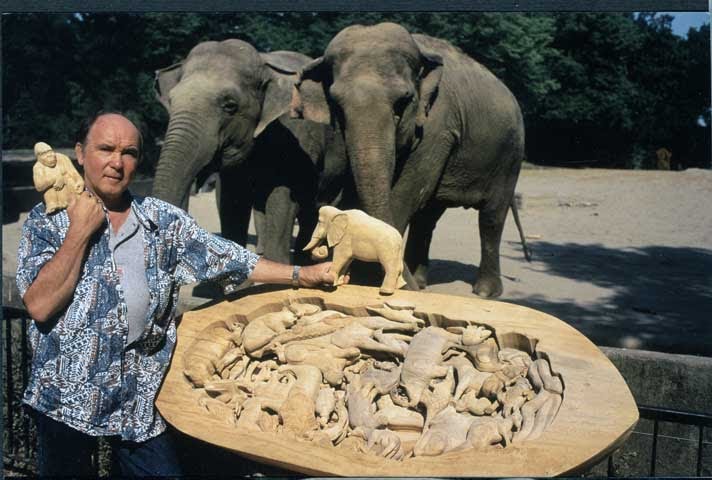
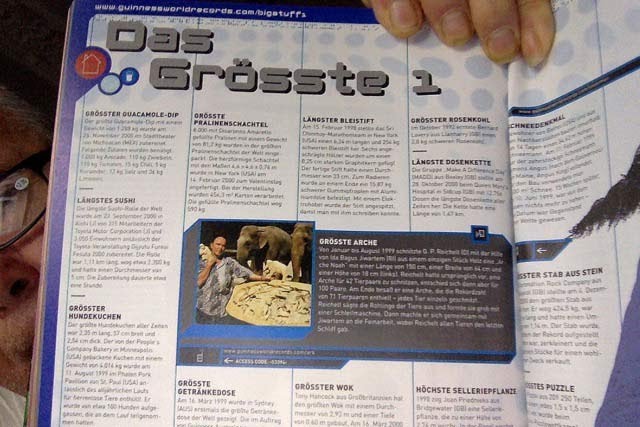

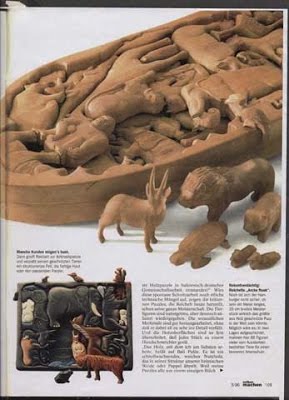

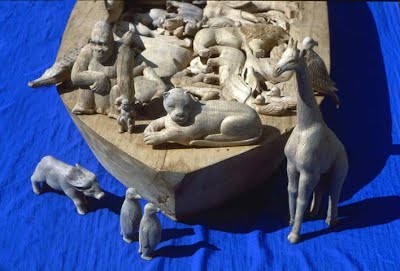
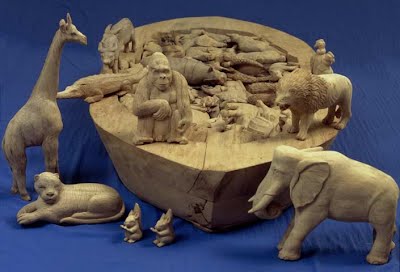

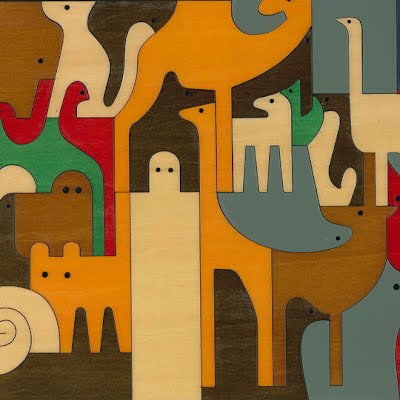
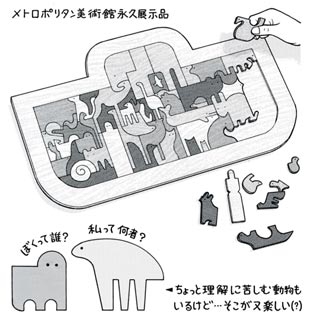
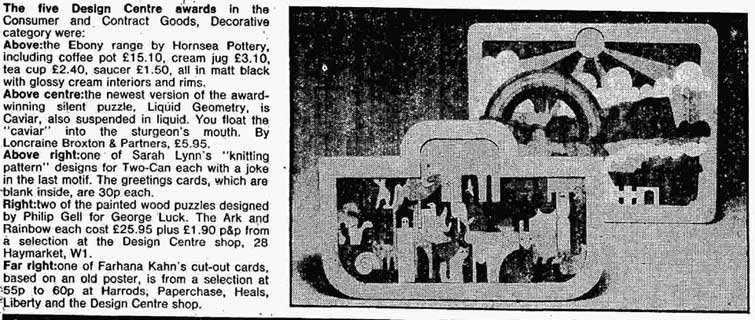




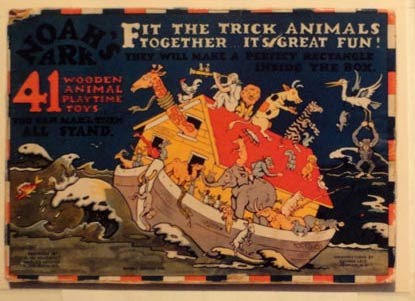
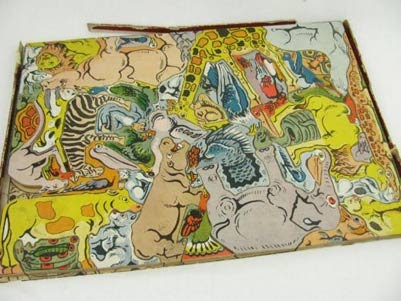
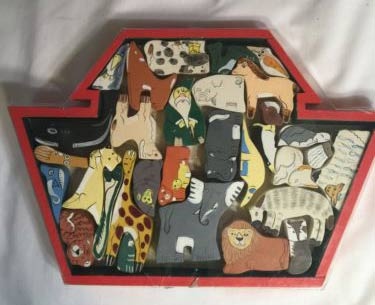
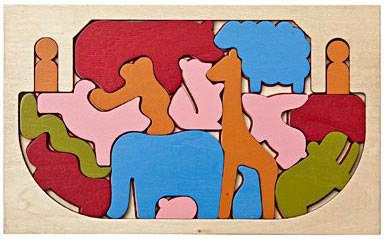
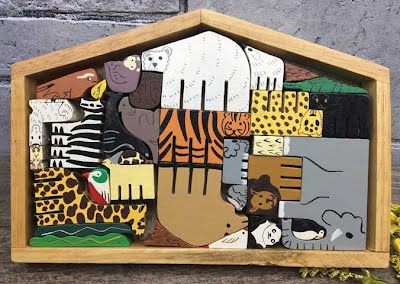
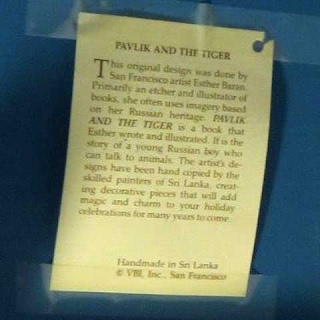

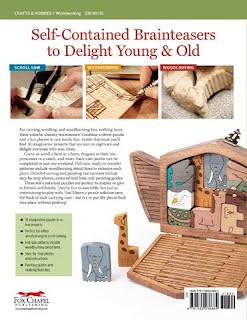
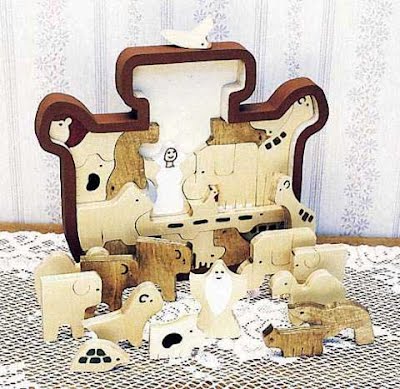
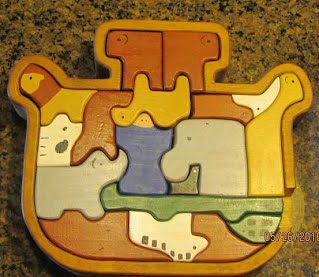
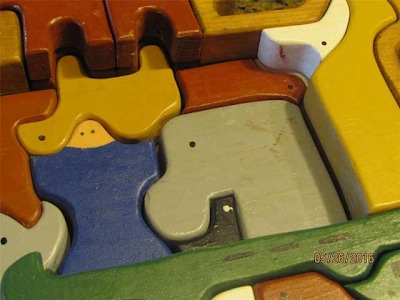
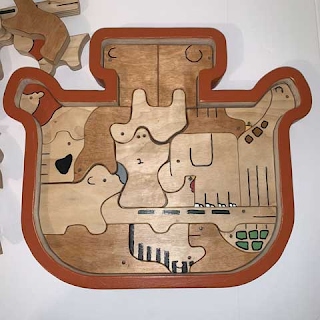
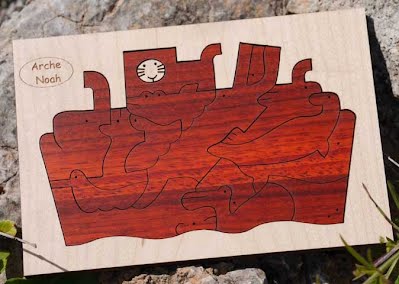
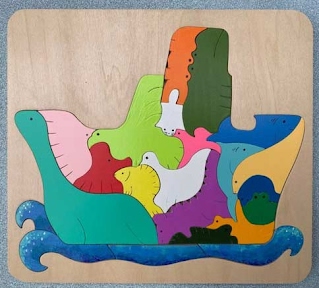
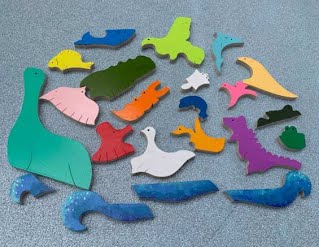
 Puzzle_height-234-width-400.jpg)
